Practical Bilevel Optimization: Algorithms and Applications
�
Nonconvex Optimization and lts Applications
Volume 30
Managing Editors:
Panos Pardalos
University of Florida, U.S.A.
Reiner Horst
University ofTrier, Germany
Advisory Board:
Ding-Zhu Du
University of Minnesota, U.S.A.
C. A. Floudas
Princeton University, U.S.A.
J.Mockus
Stanford University, U.S.A.
H. D. Sherali
Virginia Polyrechnie Institute and State University, U.S.A.
The titles published in this series are listed at the end ofthis volume.
�
Practical Bilevel
Optimization
Algorithms and Applications
by
Jonathan F. Bard
Graduate Program in Operations Research,
Department of Mechanical Engineering,
The University ofTexas,
Austin, Texas, U.S.A.
SPRINGER-SCIENCE+BUSINESS MEDIA, B.V.
�
A C.I.P. Catalogue record for this book is available from the Library of Congress.
ISBN 978-1-4419-4807-6
DOI 10.1007/978-1-4757-2836-1
ISBN 978-1-4757-2836-1 (eBook)
Printed on acid-free paper
All Rights Reserved
© 1998 Springer Science+ Business Media Dordrecht
Originally published by Kluwer Academic Publishers in 1998
No part of the material protected by this copyright notice may be reproduced or
utilized in any form or by any means, electronic or mechanical,
including photocopying, recording or by any information storage and
retrieval system, without written permission from the copyright owner
�
CONTENTS
PREFACE
Part I MATHEMATICAL PROGRAMMING
1
2
INTRODUCTION
1.1 Model Development
1.2 Early Work and Applications
1.3 Structural Considerations
1.3.1 Indifference Points and Nonexistence of Solutions
1.3.2 Significance of Order of Play
1.4 Scope and Outline
LINEAR PROGRAMMING
2.1
Introduction
2.1.1 Basic Solutions
2.1.2 Fundamental Theorem
2.1.3 Convex Properties
2.2 Simplex Method
2.2.1 Pivoting
2.2.2 Determining the Leaving Variable
2.2.3 Moving toward Optimality
2.2.4 Degeneracy and Cycling
2.3 Geometry of Simplex Method
2.3.1 Finiteness of Algorithm
2.3.2 Adjacency and Bounded Edges
2.3.3 Unboundedness
2.3.4 Finding Adjacent Extreme Points
2.3.5 Main Geometrie Argument
2.3.6 Alternative Optima and Uniqueness
V
Xl
1
3
5
8
10
11
12
14
17
17
22
23
25
29
30
32
33
37
41
42
42
44
47
47
48
�
Vl
PRACTICAL BILEVEL ÜPTIMIZATION
2.3.7 Ranking Extreme Points
2.4 Additional Features
2.4.1 Phase 1 and Artificial Variables
2.4.2 Bounded Variables
2.4.3 Kuhn-Tucker Conditions and the Linear Complementarity
Problem
2.5 Duality
2.5.1 Primal-Dual Relationship
2.5.2 Dual Theorems
2.5.3 Economic Interpretation
2.5.4 Sensitivity Analysis
2.5.5 Dual Simplex Method
3
INTEGER PROGRAMMING
3.1
lntroduction
3.1.1 Models with Integer Variables
3.1.2 Solving Integer Programs
3.2 Enumerative Methods
3.2.1 Definitions and Concepts
3.2.2 Generic Branch and Bound Algorithm
3.2.3 Branch and Bound Using LP Relaxation
3.2.4 Implementation Issues
3.2.5 Zero-One lmplicit Enumeration
3.2.6 General Brauehing and Data Structures
3.3 Cutting Planes
3.3.1 Method of Integer Forms
3.3.2 Prima! AU-Integer Cuts
3.3.3 Cuts with Unit Coefficients
3.3.4 Valid Inequalities
3.4 Benders Decomposition for Mixed-Integer Linear Programming
3.4.1 Reformulation of MILP
3.4.2 Algorithm
3.5 U nimod ulari ty
4 NONLINEAR PROGRAMMING
4.1
Introduction
4.1.1 Classification of Problems
4.1.2 Difficulties Resulting from Nonlinearities
4.1.3 Notation
49
51
51
54
57
59
61
61
66
66
72
76
76
78
83
87
89
91
92
96
102
106
109
110
114
118
121
127
127
130
133
137
137
140
142
143
�
Contents
4.2 Optimality Conditions
4.2.1 Unconstrained Problems
4.2.2 Nonnegative Variables
4.2.3 Equality Constraints
4.2.4 lnequality Constraints
4.2.5 Convex Optimization
4.3 Search Techniques for Unconstrained Problems
4.3.1 One-Dimensional Linear Search Techniques
4.3.2 Multidimensional Search Techniques
4.4 Algorithms For Constrained Optimization
4.4.1 Primal Methods
4.4.2 Penalty Methods
4.4.3 Sequential Quadratic Programming
Part II BILEVEL PROGRAMMING
5
Introduction
LINEAR BLP: CONTINUOUS VARIABLES
5.1
5.2 Theoretical Properties
5.3 Algorithms for the Linear Bilevel Programming Problem
5.3.1 Kth-Best Algorithm
5.3.2 Kuhn-Tucker Approach
5.3.3 Complementarity Approach
5.3.4 Variable Elimination Algorithm
5.3.5 Penalty Function Approach
5.4 Computational Comparisons
6
LINEARBLP: DISCRETE VARIABLES
6.1
6.2 Properties of the Zero-One Linear BLPP
lntroduction
6.2.1 Reductions to Linear Three-Level Programs
6.2.2 Algorithmic lmplications
6.3 Properties of the Mixed-Integer Linear BLPP
6.4 Moore-Bard Algorithm for the Mixed-Integer Linear BLPP
6.4.1 Branch and Bound Notation
6.4.2 Bounding Theorems
6.4.3 Algorithm
6.4.4 Computational Experience
6.4.5 Assessment
Vll
155
156
157
159
164
167
169
170
175
181
181
185
188
193
195
195
198
202
203
204
209
213
218
222
232
232
233
237
244
245
247
248
249
250
254
257
�
Vlll
PRACTICAL BILEVEL ÜPTIMIZATION
6.5 Algorithm for the Discrete Linear BLPP
6.5.1 Algorithm
6.5.2 Computational Experience
6.5.3 Assessment
7 CONVEX BILEVEL PROGRAMMING
Introduction
7.1
7.2 Descent Approaches for the Quadratic BLPP
7.2.1 An EIR Point Descent Algorithm
7.2.2 A Modified Steepest Descent Approach
7.2.3 Hybrid Approach and Concave Minimization
7.3 Branch and Bound Algorithm
7.4 Variable Elimination Algorithm
7.4.1 Convex-Quadratic BLPP
7.4.2 Computational Experience
8 GENERAL BILEVEL PROGRAMMING
lndependence of Irrelevant Constraints
8.1
Introduction
8.1.1
8.1.2 Preview of Algorithms
8.2 Branch and Bound Algorithm
8.3 Double Penalty Function Method
8.4 Reetangular Partitioning
8.5 Steepest Descent Direction
8.5.1 Necessary Optimality Conditions
8.5.2 Overview of Descent Method
8.6 Subgradient Descent - Bundle Method
8.6.1 Preliminaries
8.6.2 Optimality Conditions and Stability of Local Salutions
8.6.3 Leader Predominate Algorithm
8.7 Transformation to Concave Program
8.8 Assessment of Algorithms
9 HEURISTICS
lntroduction
9.1
9.2 Artificial Intelligence-Based Approaches
9.2.1 Overview of Genetic Algorithms
9.2.2 GABBA
9.2.3 Grid Search Technique
258
259
266
267
269
269
272
274
276
283
284
290
291
296
301
301
305
309
311
320
327
332
333
335
339
341
344
347
352
359
361
361
362
363
364
369
�
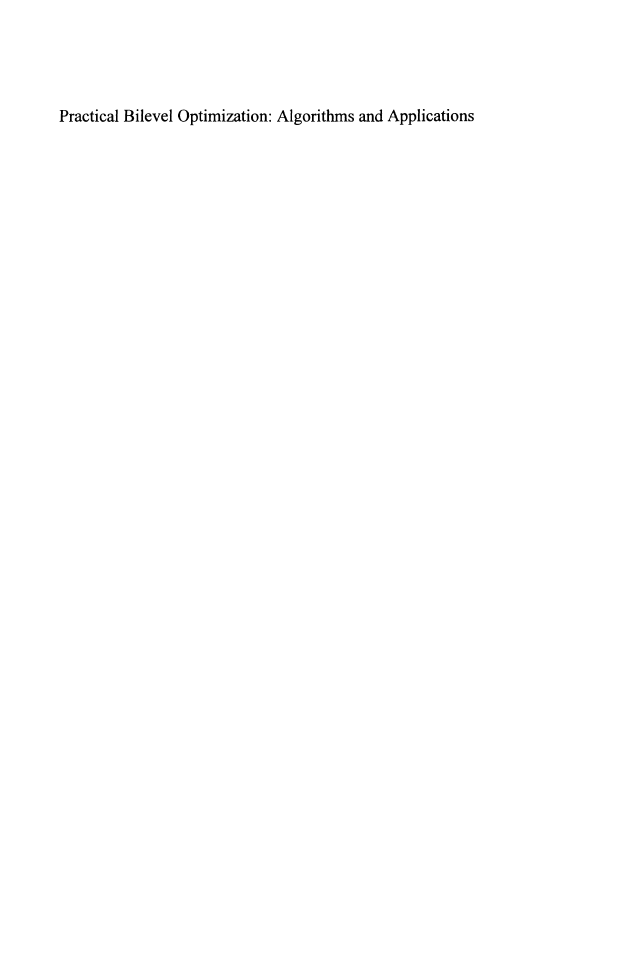
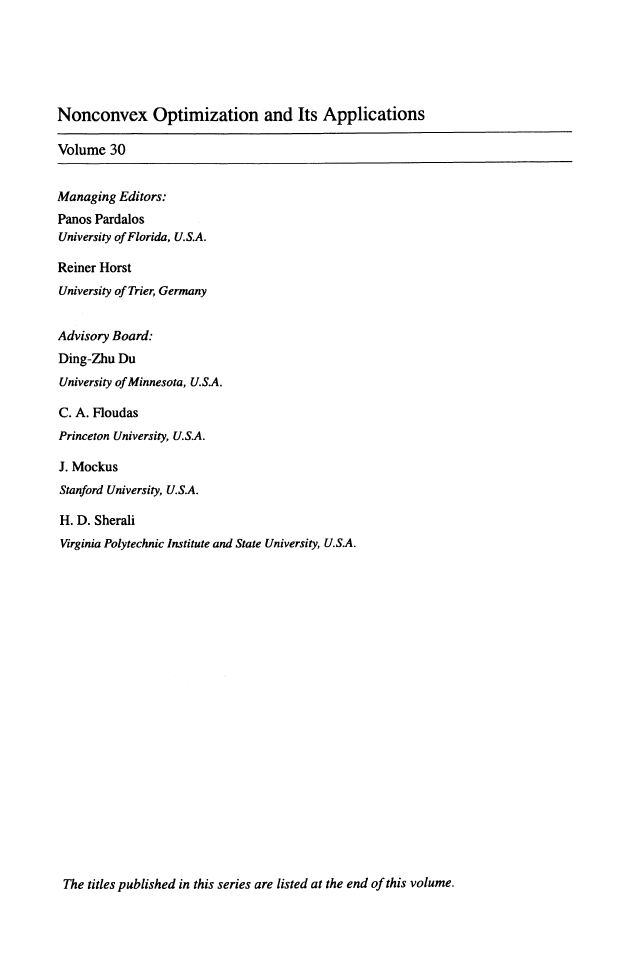
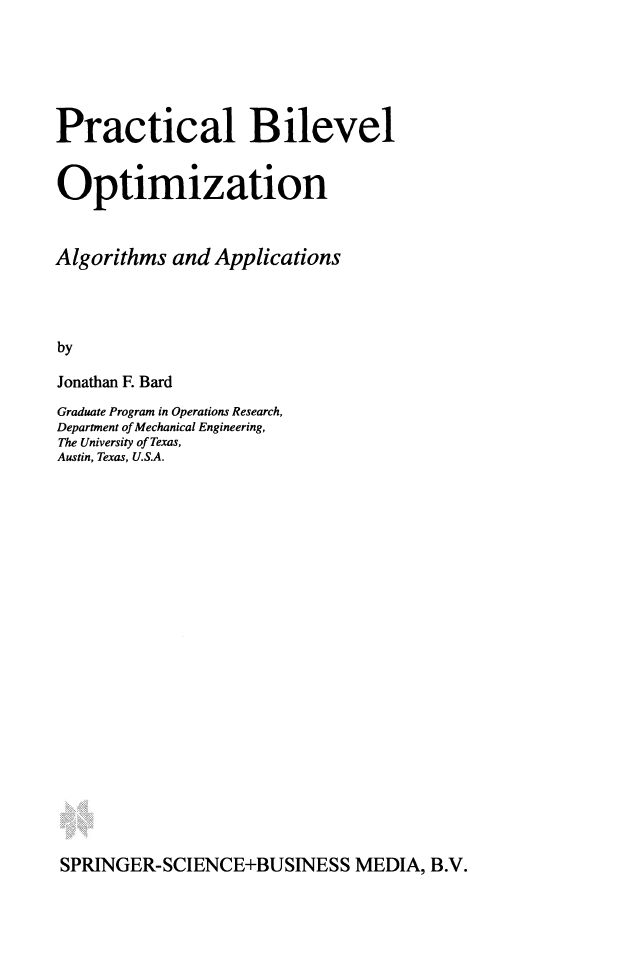
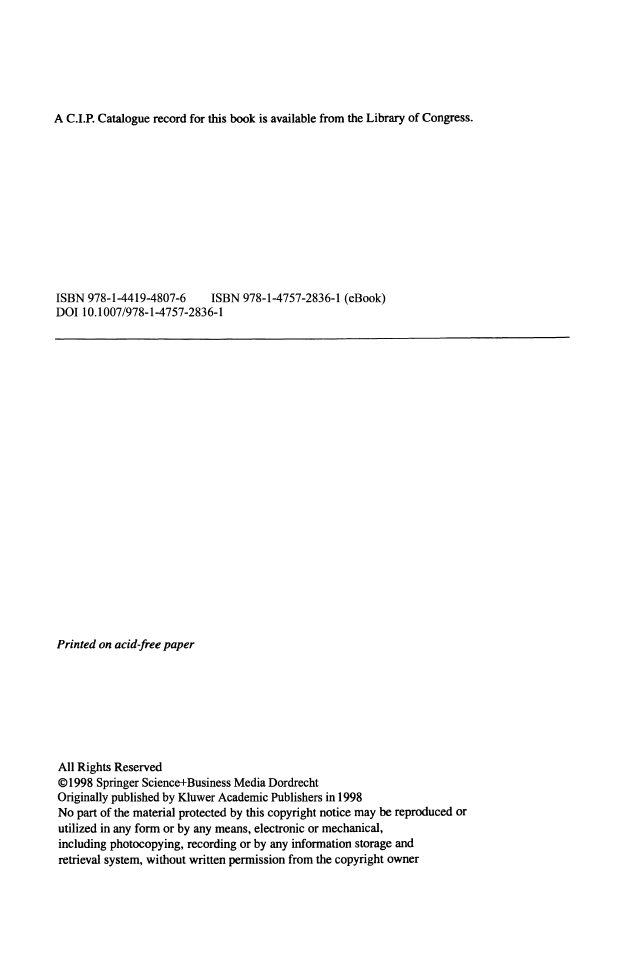
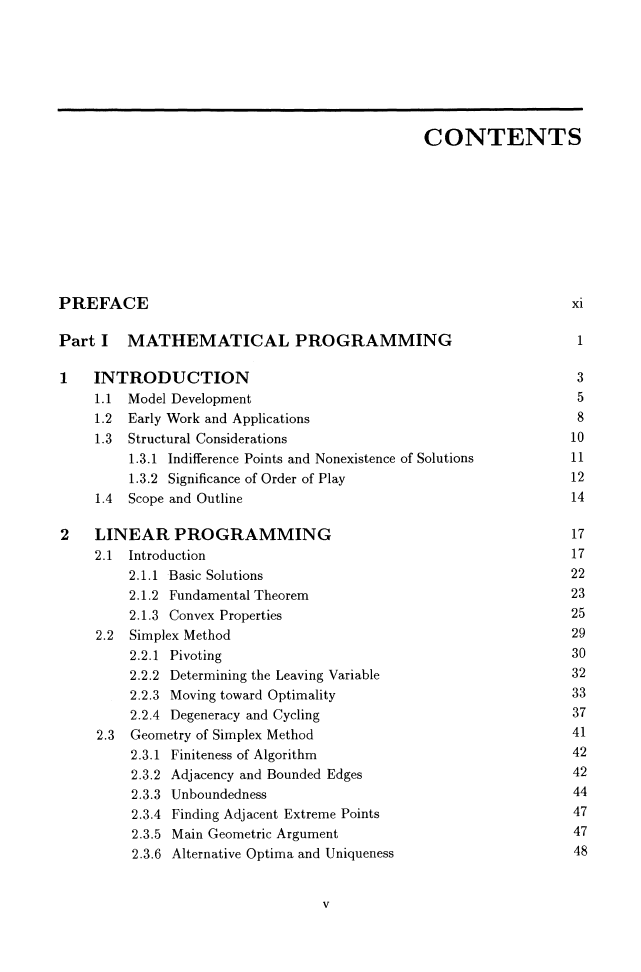
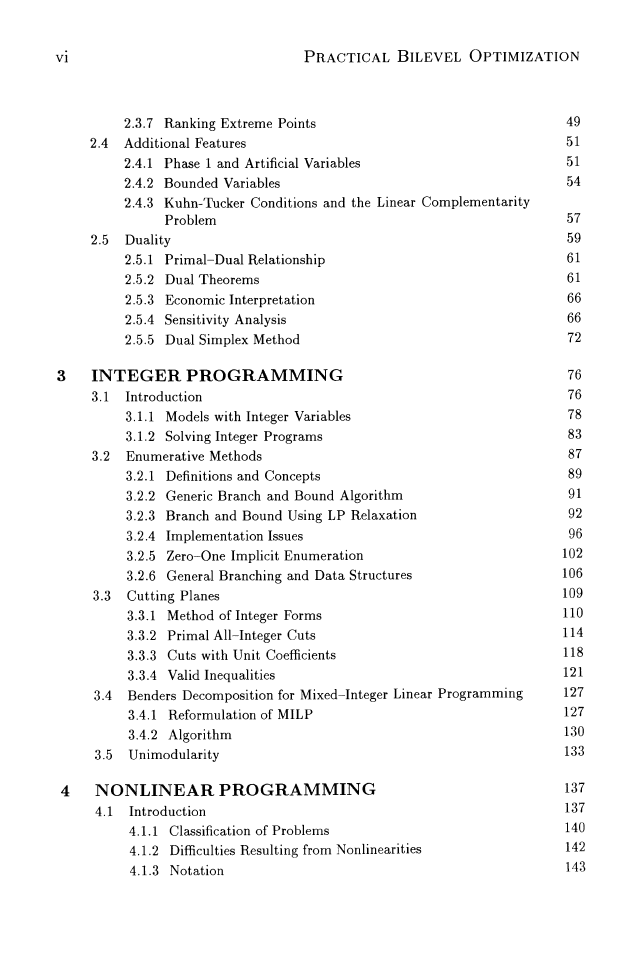
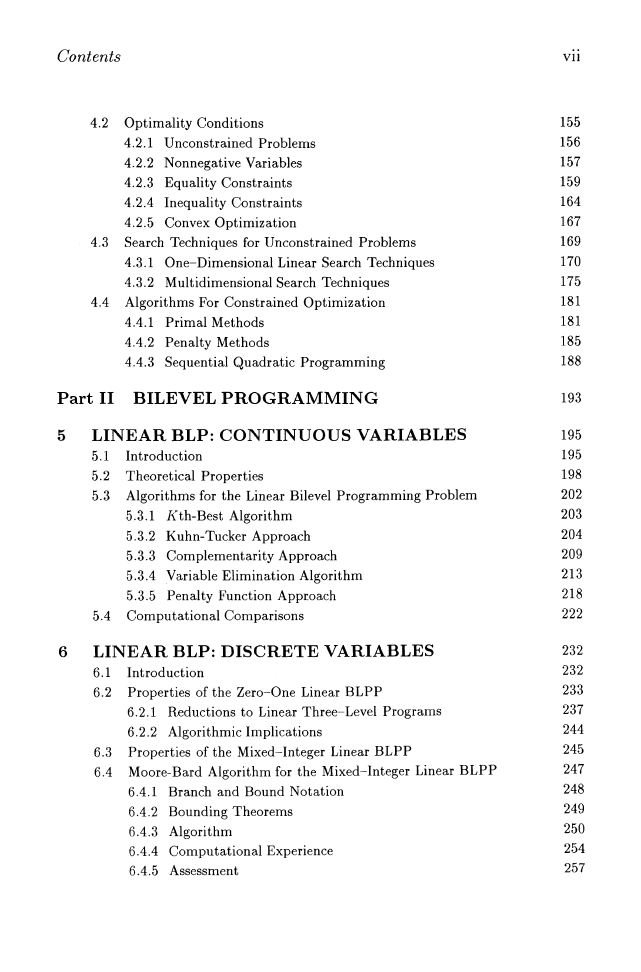
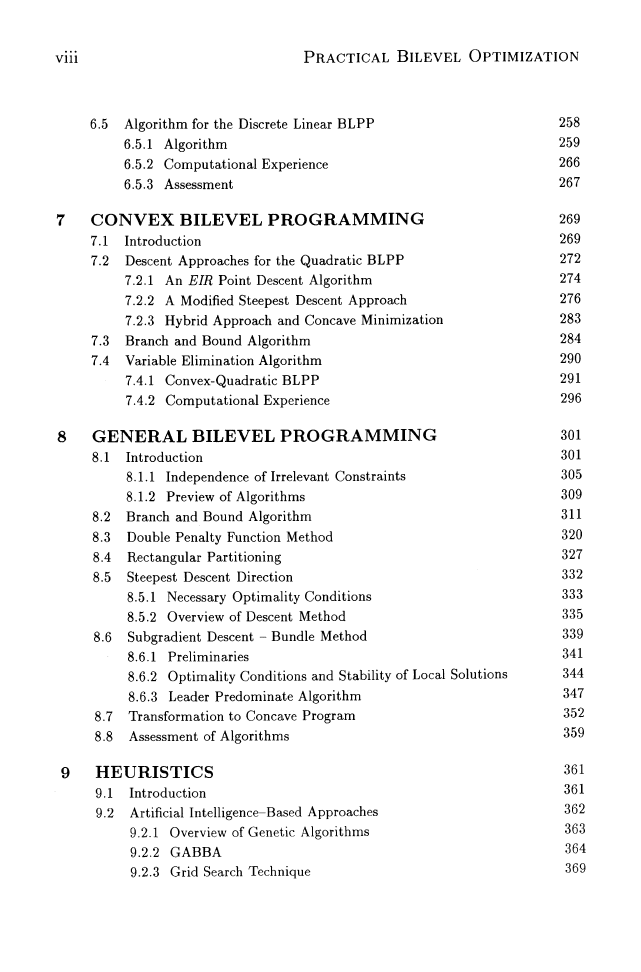








 2023年江西萍乡中考道德与法治真题及答案.doc
2023年江西萍乡中考道德与法治真题及答案.doc 2012年重庆南川中考生物真题及答案.doc
2012年重庆南川中考生物真题及答案.doc 2013年江西师范大学地理学综合及文艺理论基础考研真题.doc
2013年江西师范大学地理学综合及文艺理论基础考研真题.doc 2020年四川甘孜小升初语文真题及答案I卷.doc
2020年四川甘孜小升初语文真题及答案I卷.doc 2020年注册岩土工程师专业基础考试真题及答案.doc
2020年注册岩土工程师专业基础考试真题及答案.doc 2023-2024学年福建省厦门市九年级上学期数学月考试题及答案.doc
2023-2024学年福建省厦门市九年级上学期数学月考试题及答案.doc 2021-2022学年辽宁省沈阳市大东区九年级上学期语文期末试题及答案.doc
2021-2022学年辽宁省沈阳市大东区九年级上学期语文期末试题及答案.doc 2022-2023学年北京东城区初三第一学期物理期末试卷及答案.doc
2022-2023学年北京东城区初三第一学期物理期末试卷及答案.doc 2018上半年江西教师资格初中地理学科知识与教学能力真题及答案.doc
2018上半年江西教师资格初中地理学科知识与教学能力真题及答案.doc 2012年河北国家公务员申论考试真题及答案-省级.doc
2012年河北国家公务员申论考试真题及答案-省级.doc 2020-2021学年江苏省扬州市江都区邵樊片九年级上学期数学第一次质量检测试题及答案.doc
2020-2021学年江苏省扬州市江都区邵樊片九年级上学期数学第一次质量检测试题及答案.doc 2022下半年黑龙江教师资格证中学综合素质真题及答案.doc
2022下半年黑龙江教师资格证中学综合素质真题及答案.doc